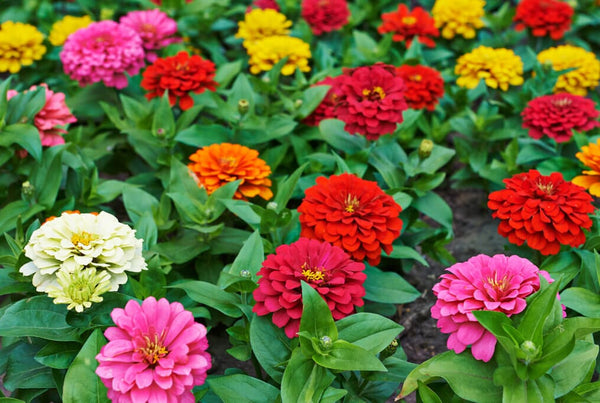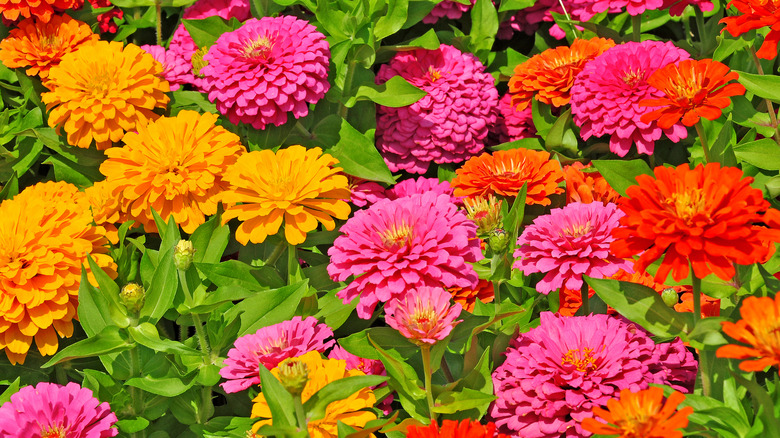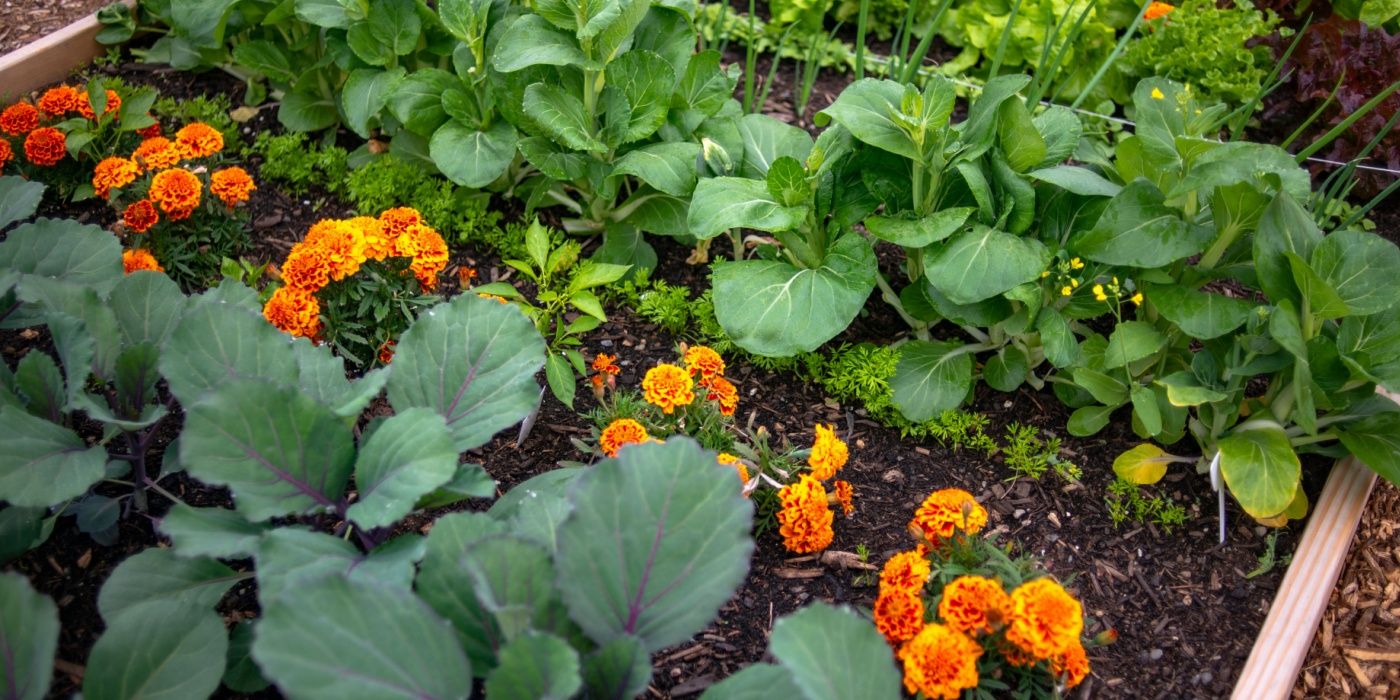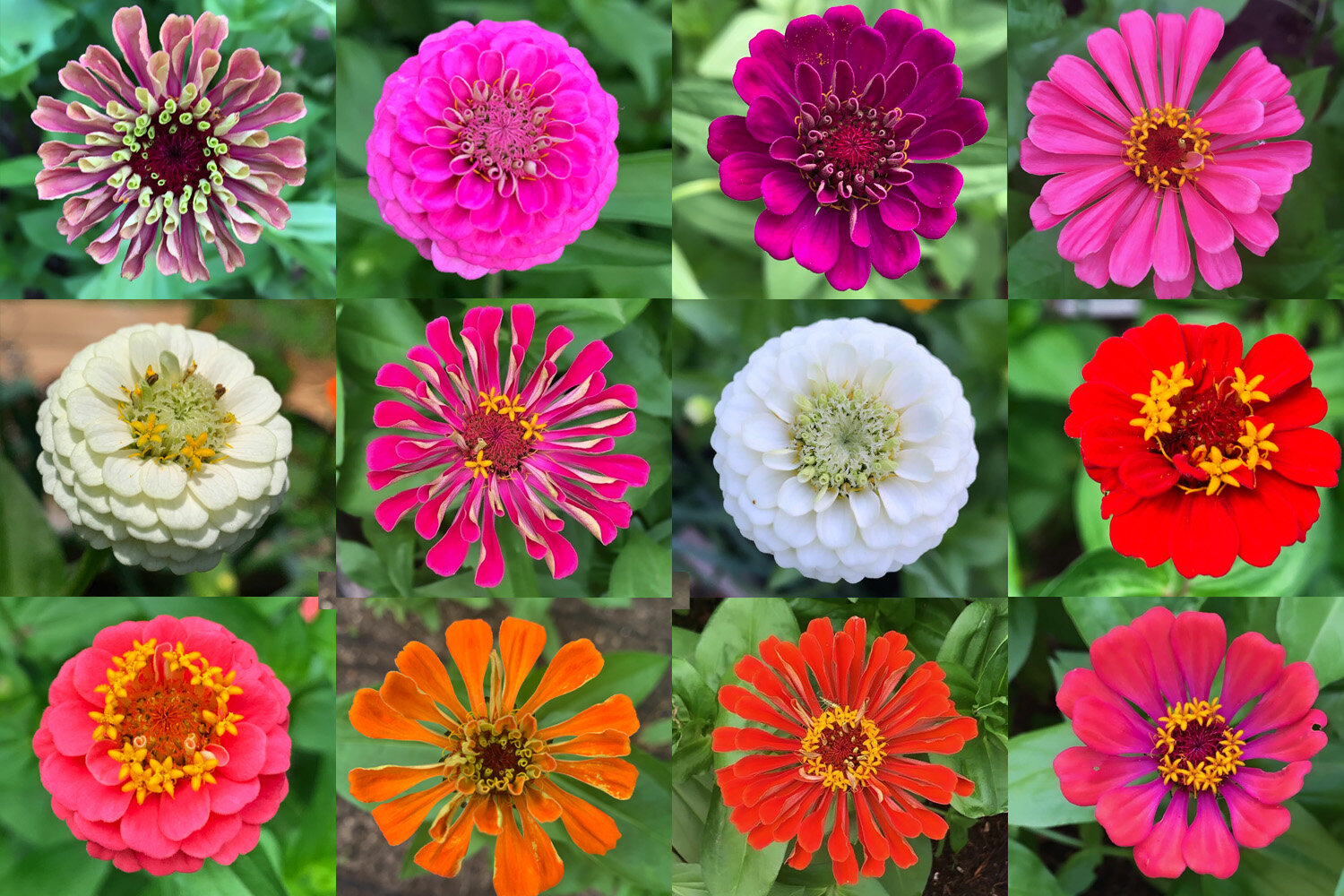Why Every Canadian Gardener Should Grow Zinnias This Year
By Darrell Smith – DH Garden Centre & DH Landscape Solutions, Vancouver, BC
Let me take you back to an early spring morning in Kitsilano.
The air was brisk, the ground still holding onto winter’s chill, and I was standing quietly in a client’s backyard. Her garden beds were well prepared—framed neatly, filled with compost-rich soil, and perfectly sectioned for the season ahead. Kale was already in place, garlic tips peeked through the earth, and young pea shoots clung to their trellis, inching toward the pale morning light.
Everything was in order. Technically, it was a strong start.
But as I stood there, something felt off.
The garden was quiet—too quiet. It lacked energy, movement, and most of all… colour. It was green, yes. Productive, sure. But it didn’t sing. It didn’t stir that feeling every gardener longs for: that mix of excitement, warmth, and life that makes a space feel truly alive.
So I reached into my seed box, pulled out a packet, and handed it to her.
“Zinnias,” I said, smiling.
She paused. “Aren’t those just for flower beds?”
And that simple question captured one of the most common misconceptions I’ve encountered in over two decades of landscaping and gardening: “The belief that flowers and vegetables belong in separate worlds.“
But here’s the truth I’ve learned—one I love sharing with fellow gardeners, new and experienced alike:
Zinnias belong in your vegetable garden.
They’re not just about aesthetics (though they’ll give you plenty of that). Zinnias bring pollinators, repel pests, boost biodiversity, and lift the spirit of the entire garden. They’re functional and beautiful—a rare and valuable combination in any growing space.
In today’s blog, I want to show you exactly why zinnias deserve a place in your veggie patch this season—and why they might just become your new favourite garden companion.
The Flower That Belongs in Every Vegetable Garden
You see, over the past 25 years doing landscaping and garden design across the Vancouver area, I’ve realized one thing: people often forget to plant beauty.
We focus on yield, pest control, soil health (and all of that is vital), but we forget the role of joy in a garden. And nothing brings joy to a garden the way zinnias do.
But zinnias aren’t just pretty faces. They earn their spot. These annuals are pollinator magnets, pest decoys, vibrant colour bombs, and—best of all—low maintenance. Whether you’re a beginner gardener with a few pots on your balcony or a seasoned grower with rows of raised beds, zinnias are one of the smartest additions you can make.

Whether you’re a beginner gardener with a few pots on your balcony or a seasoned grower with rows of raised beds, zinnias are one of the smartest additions you can make.
What Makes Zinnias So Special?
Zinnias (pronounced ZIN-ee-uhs) are vibrant, sun-loving annuals from the daisy family, originally native to Mexico. Over the years, they’ve earned their place in gardens around the world—not just for their dazzling appearance, but for their versatility and ease of care.
These beloved blooms are available in an extraordinary range of colours, heights, and petal forms—from neat, button-like pom-poms to bold, cactus-flowered varieties with striking, quilled petals. Whether you prefer soft pastels or vivid jewel tones, there’s a zinnia to match every garden palette.
But what truly sets zinnias apart—particularly in Canadian gardens and temperate coastal regions like Vancouver—is their resilience.
-
They flourish in full sun, making them ideal for open beds and bright balconies.
-
They bloom reliably from late June all the way to the first fall frost, providing continuous colour through the heart of summer.
-
They tolerate heat, light drought, and average soil conditions far better than many ornamental flowers.
-
They grow rapidly—with some varieties flowering just 60 days after planting.
In short, zinnias are low-maintenance, high-impact plants. Whether you’re a seasoned gardener or just getting started, they’re one of the most rewarding—and forgiving—flowers you can grow.

In short, zinnias are low-maintenance, high-impact plants. Whether you’re a seasoned gardener or just getting started, they’re one of the most rewarding—and forgiving—flowers you can grow.
Six Compelling Reasons to Plant Zinnias (Especially If You Grow Veggies)
1. Zinnias Are a Pollinator Powerhouse
At DH Garden Centre, I talk to a lot of folks who want to grow their food organically. But here’s the truth: without pollinators, organic gardening doesn’t work.
Zinnias draw in the whole crew—bees, butterflies, hoverflies, even hummingbirds. One customer of mine said her zinnia patch looked like a miniature airport runway, with insects landing and taking off all day long.
-
Ladybugs are particularly drawn to zinnias and help keep aphids in check.
-
Predatory wasps feed on the nectar and hunt down cabbage worms and tomato hornworms.
-
Swallowtail butterflies flock to the wide, flat blooms for easy nectar access.

🌼 Pro tip: Plant your zinnias around squash, cucumbers, beans, or tomatoes for maximum pollination and pest protection.
2. They’re Incredibly Easy to Grow
Some flowers can be a bit finicky. Not zinnias.
You can start them from seed indoors, or better yet, direct sow them once the soil has warmed to 18–21°C (typically late May in Vancouver). Give them sun, decent soil, and a little spacing, and they’ll thrive.
Here’s what works for me:
-
Soil: Light, well-drained, compost-enriched
-
Planting depth: ¼ inch
-
Spacing: 6–12 inches apart
-
Water: Moderate—zinnias don’t like soggy roots
Don’t overthink it. I’ve even seen kids scatter seeds with no real plan, and still end up with a fireworks show of colour by midsummer.
3. They Add Drama, Colour, and Joy
Zinnias don’t just fill gaps. They change the feel of a garden.
Last year, one of our customers planted a border of Zinnia elegans ‘Purple Giant’ around her tomato bed. Every visitor who walked by commented on the purple towers of blooms. They were the perfect photo backdrop—and totally unexpected in a veggie patch.
You can go wild with colour:
-
Peppermint Stick – red and white striped blooms
-
Benary’s Giant – tall, with blooms up to 6″ across
-
Zahara Double Cherry – compact but stunning
-
Cactus Flowered Mix – with quilled, spiky petals
Whether your style is orderly and elegant or bursting with whimsy, there’s a zinnia for you.

Whether your style is orderly and elegant or bursting with whimsy, there’s a zinnia for you.
4. They Act as Natural Pest Decoys (Trap Crops)
This is a trick I’ve used in dozens of gardens: plant zinnias as bait.
Certain pests—aphids, thrips, spider mites—love zinnias more than your precious peppers. So plant them around the edge of your garden like a living shield. Pests hit the zinnias first, and you can control the damage without losing your food crops.
It’s an organic solution with double benefits:
-
Fewer pests in your vegetables
-
Blooms you can still enjoy or cut for the vase
Not every gardener is familiar with trap cropping, but once you see it in action, it’s a game-changer.
5. Zinnias Just Keep Blooming
We call them “cut and come again” flowers for a reason.
The more you harvest or deadhead zinnias, the more they bloom. One plant can produce 10, 20, even 30 flowers through the season.
Their vase life is also excellent—7 to 10 days indoors, sometimes more with clean water and a stem trim every few days.
Here at DH Garden Centre, we’ve helped brides grow their own zinnias for weddings, families use them for weekly bouquets, and even florists source direct from home gardeners.
6. They Reseed Themselves (So You Save Time Next Year)
Here’s one of my favourite parts: zinnias are generous.
Let a few blooms dry on the plant, and you can harvest the seeds yourself. Twist the dry heads, collect the arrow-shaped seeds, and store them in envelopes for next spring.
Too busy for that? Let nature do its thing. In Vancouver’s mild climate, many zinnia varieties will self-seed, popping up the following year with surprise colour and placement.
Where to Grow Zinnias in Your Garden
You’ve got options!
One of the great things about zinnias is their versatility. Whether you’re working with a sprawling backyard or a modest city balcony, there’s always room for a few zinnias to brighten things up—and support your edible crops along the way.
Here are a few excellent ways to incorporate zinnias into your garden design:
Raised Beds: Compact varieties such as Zinnia angustifolia or Zinnia marylandica thrive in raised beds. Their tidy, low-growing habit makes them perfect for edging vegetable rows, softening the lines of wooden planters, and adding a touch of colour where you’d least expect it.
Containers & Balconies: Limited on space? Zinnias are incredibly container-friendly. A single 10–15L pot can support multiple blooms, creating a cheerful, mini bouquet right outside your door. Choose dwarf or compact cultivars for best results in containers.
Vegetable Garden Borders: Taller varieties like Zinnia elegans are ideal for lining the edges of vegetable plots. Not only do they add visual height and vibrant colour, but they also function as a natural barrier, attracting pollinators and distracting pests from your crops.
Pollinator Islands: Looking to invite more bees, butterflies, and beneficial insects into your space? Try creating a pollinator island—a small patch dedicated to nectar-rich plants. Zinnias pair beautifully with echinacea, calendula, bee balm, and cosmos, forming an eye-catching habitat that supports biodiversity right in your backyard.
:strip_icc()/102792228_preview-e7f1d791751044ae96aa81a9d8c9faeb.jpg)
One of the great things about zinnias is their versatility. Whether you’re working with a sprawling backyard or a modest city balcony, there’s always room for a few zinnias to brighten things up—and support your edible crops along the way.
At DH Landscape Solutions, we often incorporate zinnias into ornamental edible garden designs, blending form with function. One of our favourite combinations? Zinnias alongside purple basil, rainbow chard, nasturtiums, and lemon gem marigolds. The effect is both stunning and strategic—a landscape that’s not only beautiful but productive and pollinator-friendly, too.
If you’re ready to design a garden that’s equal parts edible and elegant, zinnias are a smart place to start.
At DH Landscape Solutions, we’ve even used zinnias in ornamental edible garden designs, pairing them with purple basil, rainbow chard, and nasturtiums.
The mix of textures and colours is stunning—and totally functional.
Frequently Asked Questions About Zinnias
Q: Can I grow zinnias from transplants?
Yes—but they prefer being direct sown. If you do start indoors, transplant once nighttime temps stay above 10°C.
Q: How do I know when to cut zinnias for vases?
Use the “wiggle test”—gently shake the stem below the flower. If it’s stiff, it’s ready to cut. If it flops, wait another day or two.
Q: Are zinnias deer or rabbit resistant?
Generally, yes! The texture and taste don’t appeal to most grazers, though no plant is truly 100% pest-proof.
Let’s Plant Some Zinnias, Shall We?
At DH Garden Centre, we’re more than just a place to buy seeds—we’re a family-run business that loves helping your garden thrive. Come visit us at 3742 West 10th Avenue, Vancouver, or browse our curated Zinnia Starter Kits online.
Need help choosing varieties? Want compost and organic worm castings to boost blooms? Our team is always here to help—with heart and hands-on advice.

